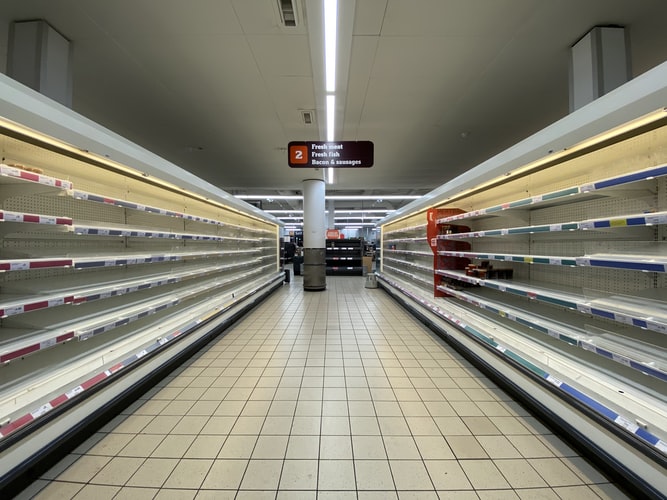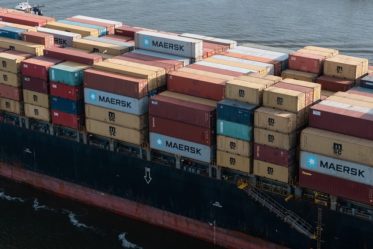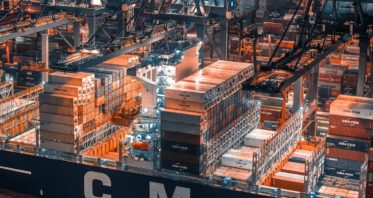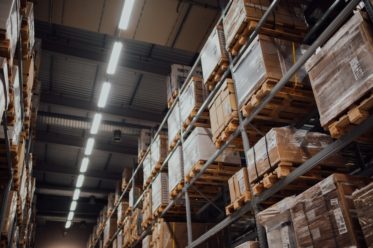
From electronics and seasonal clothing to home furnishings, toys, and food items, supply chain issues are causing in-store product shortages, creating a climate reminiscent of the panic buying that hit stores at the start of the pandemic. This time around, however, the disruptions are on a smaller scale and local in nature.
In the US, retail sales, excluding food services, were 22% higher during the first half of 2021 compared to the previous year. Factories are starting to run normally and catching up with supply. However, a combination of labor shortages, global supply chain disruptions, and lingering levels of pandemic-induced demand means goods are not making it to store shelves.
Why? Labor shortages at farms and processing plants, international shipping delays due to container line and port bottlenecks, as well as manpower shortages, and warehousing space constraints are causing goods to be held up in transit.
The modern distribution system was not built to handle COVID-19 and has left many companies vulnerable because they were either unprepared or lacking resources. Increased awareness of supply chain vulnerabilities following events like the pandemic can help companies to understand how their supply chains could be affected and protect themselves against these types of global shocks.
From farm to factory to fork, food distributors are bearing the biggest brunt of these supply chain headaches due to the high turnover nature of food industry products.
The effect of labor shortages on supply chain issues
Everything from random shortages of grocery items to online shipping delays can all be traced back to the pandemic-induced global supply chain disruption. When there are interruptions or delays in one link of the supply chain, a potentially devastating knock-on effect across the entire system is inevitable.
More than 70 container ships unable to unload goods at ports in Los Angeles and Long Beach is but one example of a scenario playing out across global locations. And the root cause plaguing nearly every disruption along this international network? Labor shortages. The container ships don’t have the longshoreman to unload them. And even if they are unloaded, a shortage of truck drivers – a trend that has worsened since the pandemic – has resulted in further delays.
Food companies have seen a dramatic increase in demand for shelf-stable products as the pandemic unfolded. With products being sourced internationally, shipping costs soared five-fold pre-pandemic, and transit times were four times longer.
Labor shortages are having a huge impact on economic growth in every part of the globally integrated supply chain. In an attempt to remedy the situation, organizations have begun offering sizable signing bonuses and competitive benefits to attract skilled workers. These efforts, it appears, have not stemmed the tide, with very few of these interventions proving effective.
All indications are that smarter deployment of automation at all levels of the supply chain will have to be part of any long-term solution.

Cargo ships are waiting weeks to dock contributing to price increases, delays, and heightened consumer frustration.
Material shortages at production centers are creating similar problems
With the global supply chain already fragile, any additional setbacks have the potential to significantly worsen an already tenuous situation. Countries across the world are experiencing issues with agricultural products as well as those synthesized from raw materials.
China provides the active ingredients used in 67% of herbicides and 43% of insecticides. China’s undisputed and dominant role as the “world’s factory” means that any major disruption puts global supply chains at risk. Add to this blocks in the flow of seed, fertilizers, and labor as well as the importance of timing for seasonal planting and applications of crop protection, and an entire year or more worth of production is at risk. In addition, unforeseen natural disasters, droughts, and floods further affect the already strained crop production and farm income.
Similarly, supply disruptions have triggered price hikes in chicken products. The supply dip during the first quarter of 2021 is still being felt with winter storms, increased pandemic-induced demands, and labor shortages contributing to the shortage of chicken impacting even large chains such as KFC, which operate across thousands of locations globally.
How has the global supply chain changed in 2021?
The jury is still out on the full and devastating impact of COVID-19 on supply chains. One thing is certain though – it’s unleashed global economic and financial ramifications that have reverberated through global supply chains, from raw materials and ingredients to finished products.
Shipping companies reduced capacity at the onset of the pandemic due to regulations limiting activity and also in anticipation of a decline in demand. With the global economy recovering and COVID-19 severity decreasing, shipping demand has increased, but not to pre-pandemic levels, and the industry has yet to implement post-pandemic restructuring processes.
Cargo ships are waiting weeks just to dock, contributing to price increases, delays, as well as heightened consumer frustration, and food distributor angst. A combination of port and rail congestion and container, warehouse, and labor shortages has led to moving times taking twice as long compared to pre-pandemic levels. For many global distributers, this could mean delivery times of more than three months and costing six times more than in 2019!
To overcome the risks of supply chain disruptions, many companies are turning to digital supply networks (DSNs) to enhance visibility across the end-to-end supply chain, and support businesses’ ability to resist such global shocks.
Digital supply networks are revolutionizing how things get from one place to another. Traditional linear models have been transformed into digital ones, where functional silos are broken down and companies become connected to their complete network for end-to-end visibility that enables collaboration across business units, and the agility to respond when changes happen or demand fluctuations occur. By connecting all the necessary links, you know what’s going wrong before it becomes a full-blown crisis.
Digital Supply Networks establish a “digital thread” through physical and digital channels, connecting information, goods, and services in dynamic ways:
- Physical to digital: Capture signals from the physical world to create a digital record
- Digital to digital: Exchange data using advanced analytics and AI to drive meaningful insights
- Digital to physical: Deliver automated information to generate interventions in the physical world
The digital economy has created a paradigm shift in the way goods are distributed, with entire industries being upended by this new model. A traditional supply chain is one where raw materials move from supplier to manufacturer before they’re shipped off for sale somewhere else. These days, however, it’s all about dynamic networks that can bridge gaps between buyers and sellers seamlessly thanks to information technology like the Internet of Things (IoT), artificial intelligence, robotics, 5G, or GPS tracking systems that monitor every step along the way – even down to your storeroom inventory if need be.
In contrast to a traditional supply chain model, digital networks are dynamic and integrated, with the capability for high-velocity, continuous streams of data.

Shipping costs have increased five to six times pre-pandemic rates.
How is your business faring with the supply chain frustrations?
Pandemic-induced foodservice supply chain issues have accelerated the need for digital and analytics solutions. The supply chain crisis sparked by COVID-19 has demonstrated the vulnerability of dated models where a shutdown at a single point in the process forced entire systems to halt operations abruptly.
More resilient supply chain models can be achieved by enhancing predictability, transparency, and flexibility while simultaneously driving efficiency. Improvements will come largely through digital enablement, accelerating supply-chain transparency, resilience, and automation.
The crisis has laid bare that companies embracing digital and automated solutions are significantly more resilient. They have transaction data across products, brands, and customer segments that help them foresee consumer needs and offer alternative solutions. Digital and automation tools also unlock productivity in inventory management, warehousing, and delivery. Efficient planning can assist distributors to deliver the right products in the most efficient ways, thereby deepening market infiltration.
The most resilient distributors are taking a closer look at logistics complexity, visibility, and customer adaptability to build digitally-enabled supply chains that harness technology. Companies can thereby forecast customer needs with digitally enabled predictive analytics and gain increased flexibility with real-time planning. Companies can improve decision-making through real-time supply-chain transparency and improve efficiency at warehouses and distribution centers through automation.

Companies can improve decision-making through real-time supply-chain transparency and improve efficiency at warehouses through automation.
The Skynamo advantage
Skynamo solutions will help prepare you against any “black swan” event such as the pandemic and are designed to anticipate and meet future shocks. And as our solutions are cloud-based; no major hardware, infrastructure, or technology expertise is required to be up and running in minimal time – meaning the supply chain issues being faced won’t affect your ability to get a solution up and running.
For businesses seeking transparency in data visibility and visualization, Skynamo offers teams access to information they need to make informed decisions and keep their eyes on the bottom line. Skynamo distributors can choose from a broad range of proven digital and analytical tools to facilitate on-point pricing, cross-selling, churn management, and route optimization.
According to a 2018 State of Field Sales Report, 92% of field sales respondents indicated that they spend up to 30 hours per week on manual sales reporting. This indicates a huge missed opportunity, misused time, and therefore, lost revenue. Skynamo provides field sales reps with access to the most up-to-date product, pricing, and customer information, task automation, elimination of manual admin, and data reporting insights into sales activity in real-time or via activity timelines.
Sales teams can generate quotes, view credit notes, check stock and submit orders all by means of a mobile device. In addition, stock and customer order history can be accessed from any mobile device. Knowing what the customer has bought before and delivering an accurate quote translates to additional sales and customer experience. Field reps can enter orders and customer information offline and sync their device when back online to activate the entered information.
Skynamo’s digital solutions offer insightful dashboards to make smarter sales decisions. Managers can also create forms for sales teams to capture market and customer intelligence. Skynamo provides an intuitive and practical mobile solution for the field salesforce by simplifying day-to-day processes and allowing them to invest their time where needed most.
Schedule a Skynamo demo today and find out how you can access real-time field reports and insights, track actual vs. forecast sales, and stay ahead of supply chain issues before they arise.
